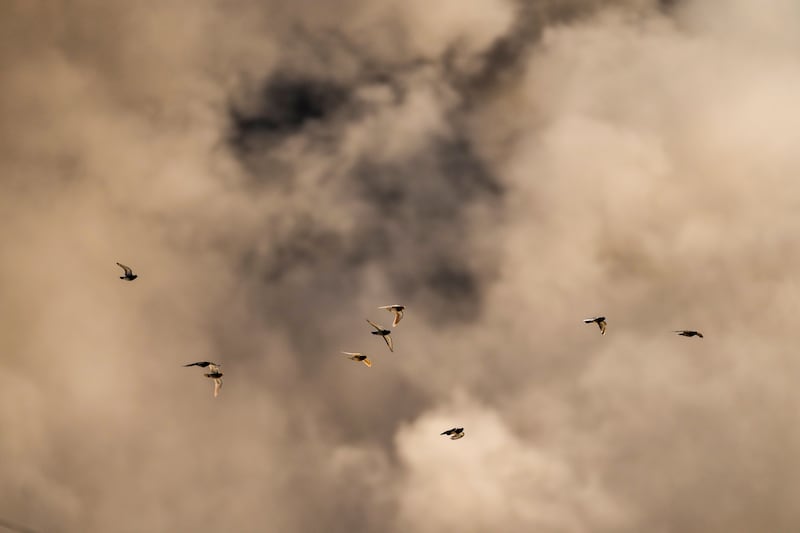Live updates: Follow the latest news on Israel-Gaza
Houses reduced to rubble, a child desperately screaming for his mother and people frantically looking for loved ones: these images, widely shared on social media last week, might have easily been mistaken for scenes from Gaza. But they came from south Lebanon, in the border town of Aytaroun.
Lebanon's southern border has become a battleground between Israeli forces and Iran-backed Hezbollah.
Hezbollah's stated objective is to divert Israel from its invasion of the Gaza Strip following Hamas’s unprecedented attack on October 7.
The border conflict, which has killed more than 120 people, mostly Hezbollah fighters but also 17 civilians, has so far been limited to border communities.
Israel said six of its soldiers and four civilians have been killed in the area.
But the violence has recently escalated, with Israel intensifying its attacks. Air strikes on border villages are displacing more and more people, while locals say Israel's use of white phosphorus has devastated farmland.
The conflict has come as Lebanon experiences one of the worst economic crises in modern history. South Lebanon, which has long suffered from a lack of investment, is under further strain.
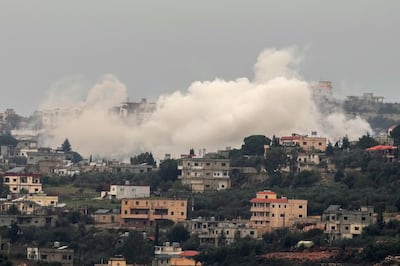
The initial challenge is to assess the extent of the damage amid the fighting.
“We don't know the extent of destruction because it can drastically increase from one day to another,” Hector Hajjar, Lebanon's caretaker Minister of Social Affairs, told The National.
The government's current focus is to provide immediate humanitarian aid to the region, including food, hygiene and basic needs, he said.
The cash-strapped government also aims to provide financial relief to the UN's estimated 50,000 people who have been displaced from the south, but will need to rely on donations from the UN and the EU.
“We don't have a specific budget for the crisis,” Mr Hajjar added.
Layers of losses
But for southern residents, whose lives are on hold since the fighting began, immediate aid is not nearly enough.
“Life's more than just eating and drinking; it's about planning a future,” said Oday Abousari, 29, from Dhayra, 100 metres from the border.
The war has damaged and destroyed property in the villages of southern Lebanon, which will require significant investment to rebuild.
In Dhayra, a village with 2,000 inhabitants, Mayor Abdallah Gharib told The National that Israeli shelling has destroyed 50 houses, including his own.
The damage is also economic.
Joseph Salameh, a local official in Qlayaa, told The National that farmers – the backbone of the region's economy – have suffered the most through being unable to access their land.
“There is no prospect for the future; the village has been emptied, lacking all essential elements for life and no one is taking responsibility for these issues,” he said.
The environment is another victim of the war. The Washington Post revealed that Israel used US-supplied white phosphorus munitions, prohibited near civilian areas under international law, in an October attack in southern Lebanon's Dhayra.
Farmers in the village told The National they have discarded their crops as a precaution. But research on the long-term impact of white phosphorus, a toxic chemical that can remain indefinitely in saturated soil, is scarce.
In Lebanon, polluted soils risk becoming an uncounted casualty of the war.
Rami Zurayk, a professor at the faculty of agricultural and food sciences at the American University of Beirut, is the only researcher conducting tests on soil samples from affected villages in Lebanon to determine potential contamination.
“The US army has a protocol to test for white phosphorus, which I am trying to reproduce in my lab,” he said.”
“But it should be done at a much bigger scale.”
'A dark night': Residents recount Israeli white phosphorus attack on Lebanese border town
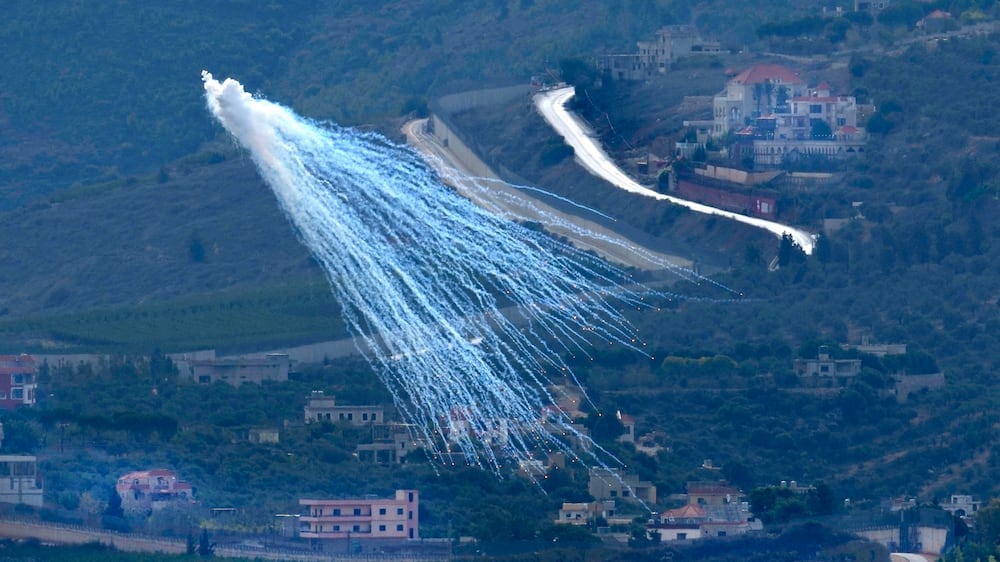
Hezbollah's compensation promises
Hezbollah and its reconstruction arm, Jihad Al Bina, have promised to compensate locals.
“All villages affected by the aggression, with fully or partially damaged houses, farms and cars, will be compensated,” a Hezbollah representative told The National, stressing that there will be no distinction between Sunni, Christian and Shia villages.
During the week-long truce late last month, residents from border villages confirmed that Hezbollah began assessing the damages, but had not yet offered compensation.
The assessment primarily focused on house destruction, with less consideration for losses related to land and crop destruction, residents said.
Most welcomed the move. “If not Hezbollah, who will pay? The Lebanese government?” said a resident from Alma Chaab, a Christian border town.
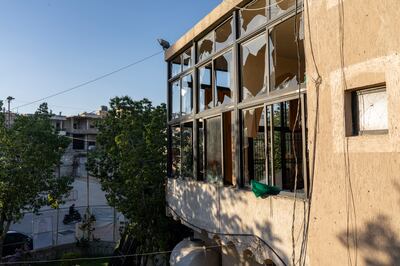
Some have been more cautious. A resident from Dhayra, a Sunni village whose inhabitants are not considered supporters of Hezbollah, told The National that he would not accept any money from the group. His losses are mainly related to crops and he said he did not expect to be offered adequate compensation.
For Nicholas Blanford, a non-resident senior fellow at the Atlantic Council’s Rafik Hariri Centre, Jihad Al Bina may be able to cover the damages as long as they are limited to border communities.
“But if the conflict were to escalate into a full-scale war, I really don't see who would bail out,” he said.
This time, unlike in 2006 when Hezbollah and Israel engaged in a month-long war, Jihad Al Bina might end up solely bearing the costs of reconstruction.
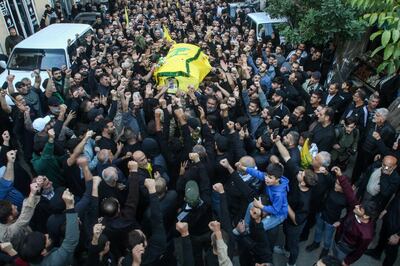
Decades of neglect
Faced with uncertainty, southern border residents feel neglected by public authorities – a sentiment echoed in the slogan “south Lebanon is Lebanon”, voiced by many.
“As the state of Lebanon was established and borders drawn, south Lebanon became isolated from its vital network, stretching from the coast in Palestine to the interior in Damascus, and became impoverished and neglected by the central state in Beirut,” said Munira Khayyat, an anthropologist professor at NYU Abu Dhabi.
“The situation is further exacerbated by the persistent state of war.
“Israel has spent years attacking the network of life and the landscape in south Lebanon.” It was a strategy “to dominate and control”, and “ensure that life does not return to this area”, she said.
“But the people who live under the annihilating destruction of war have found ways to optimise the possibility of surviving,” she added. She pointed to the example of farmers opting for low-investment and more resistant crops.
But for now, as the fighting rages on, border towns stand abandoned and residents await resolution in a conflict with no end in sight.
